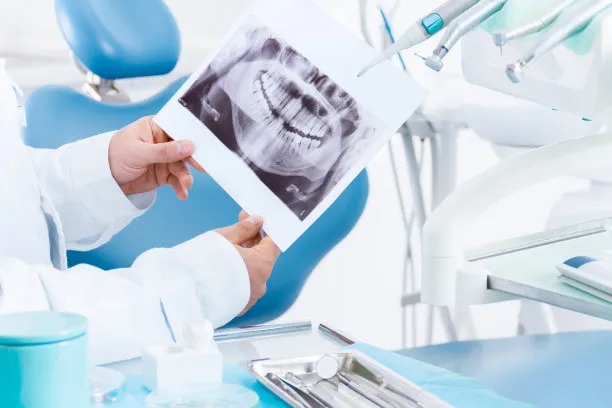The Importance of Proper Techniques and Aftercare When Extracting a Tooth for Optimal Oral Health Recovery
Summary: The extraction of a tooth is a significant dental procedure that requires precise techniques and adequate aftercare to ensure optimal recovery and oral health. This article delves into the importance of employing correct techniques during tooth extraction, the critical role of aftercare in recovery, the consequences of neglecting these aspects, and professional guidance for effective healing. Through a comprehensive examination of these factors, readers will understand the correlation between a well-managed extraction process and long-term oral health benefits.
1. The Importance of Proper Extraction Techniques

Tooth extraction is often a necessary procedure due to decay, damage, or overcrowding. Proper extraction techniques play a crucial role in minimizing complications and ensuring that the surrounding tissues are preserved. Dentists must assess the tooth and surrounding structures accurately before initiating the extraction process. This includes taking X-rays and understanding the position of the tooth, which can significantly impact the technique used.
Further, the skill of the dental professional in applying proper techniques, such as the use of appropriate tools and gentle extraction maneuvers, can greatly influence the patients experience. A well-executed extraction reduces trauma to the gum and bone, which can lead to faster recovery and less postoperative pain. Therefore, selecting an experienced dentist who employs proper techniques is paramount for the patient.
Moreover, dentists must also consider the individual characteristics of each patient, such as age, health status, and anxiety levels. Tailoring the extraction approach to suit the specific patient needs can facilitate a smoother process and promote a positive outcome.
2. Aftercare: A Key to Successful Recovery
Aftercare is equally important as the extraction itself. Proper aftercare can dramatically affect how well a patient recovers post-extraction. Immediately following the procedure, patients are typically provided with guidelines on how to care for the extraction site, including advice on managing bleeding, swelling, and pain.
Adhering to aftercare instructions, such as resting, avoiding certain foods, and taking prescribed medications, is essential. Patients should avoid strenuous activities and ensure they maintain oral hygiene without disturbing the extraction area, which fosters a conducive healing environment. Failing to follow aftercare instructions can result in complications such as dry socket or infection, which prolong recovery and can lead to further dental issues.
Additionally, it’s important for patients to be attentive to their bodys signals during recovery. Being aware of excessive pain, swelling, or unusual signs can prompt timely consultation with a dentist, preventing complications from escalating. Effective aftercare not only promotes healing but also restores functionality and comfort in a shorter timeframe.
3. Consequences of Neglected Techniques and Aftercare
Neglecting proper techniques during the extraction can lead to several adverse effects. Inexperienced professionals may cause significant damage to adjacent teeth, nerves, or bone. Such complications often manifest in the form of persistent pain, longer healing times, and potential future dental problems.
Moreover, the failure to follow aftercare guidelines can create an environment conducive to infections and other complications. For instance, dry socket, which occurs when the blood clot at the extraction site is dislodged, can be incredibly painful and may require additional treatment. In some cases, an untreated infection can lead to systemic health issues, stressing the vital connection between oral health and overall well-being.
Therefore, ensuring that both the extraction procedure is conducted correctly and that aftercare is meticulously followed cannot be overstated. These factors are essential in preventing secondary complications that not only impact recovery but can also lead to higher healthcare costs and additional dental procedures.
4. Professional Guidance for Optimal Healing
Consulting with dental professionals throughout the extraction and recovery process is crucial. Dentists are not only responsible for performing the extraction but also for providing detailed instructions on aftercare tailored to each patient’s needs. Continuous follow-up care can ensure that any potential complications are identified and addressed quickly.
Moreover, patients should feel empowered to ask questions and express concerns with their dental providers. Understanding the reasons behind each instruction can enhance patient compliance and comfort during recovery. A well-informed patient is likely to adhere to aftercare guidelines more closely, benefitting both the healing process and overall oral health.
Finally, regular check-ups after extraction can help ensure that the healing process is progressing as expected. This vigilant approach enables timely interventions if complications arise, ultimately leading to a better prognosis for oral health. The avenue of communication between patient and practitioner is key in achieving a successful recovery.
Summary: In conclusion, the importance of proper techniques and aftercare during tooth extraction cannot be emphasized enough. Effective extraction techniques and diligent aftercare are essential for minimizing complications and facilitating a smooth recovery. Individuals should seek experienced dental care and adhere strictly to aftercare guidelines to ensure successful healing and maintain optimal oral health.
This article is compiled by Vickong Dental and the content is for reference only.



